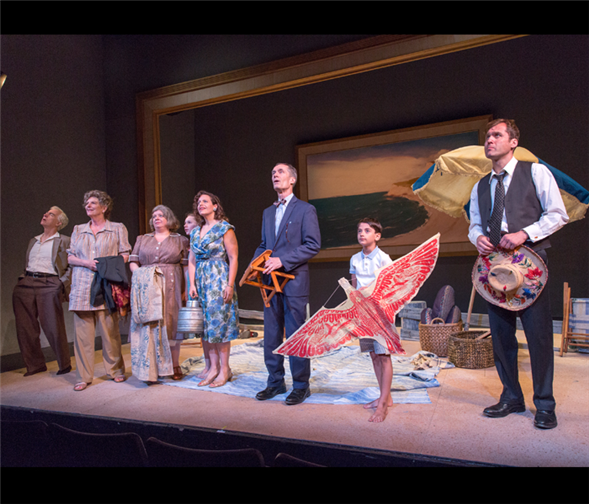Translate Page

Director Austin Pendleton on the quirks in the Mint's latest revival
---
The oddest element of a play – the detail that seems weirdly out of place – can be a key to understanding it. In Miss Julie, for instance, it's startling that the taut crisis among three characters in a kitchen is interrupted by a throng of carousing servants. But their debauched revelry changes the energy of the room, letting us know that wildness has broken through the skin of respectability. Without that pivot, the vicious finale wouldn't make sense.
There's a similar (if less orgiastic) moment in A Day By the Sea, a 1953 drama by the late British playwright N.C. Hunter, which is now being revived by the Mint Theater Company. At first, the play seems genteel and domestic, following the Anson family as they try to ignore their aimlessness and malaise. When Julian Anson, a semi-successful diplomat, encounters his childhood friend Frances Farrar, who has become a single mother after two failed marriages, we might assume we're going to watch them fall in love.
But then comes that strange moment. While the family is picnicking by the sea, Julian gets a surprise visit from Humphrey Caldwell, his superior in the foreign office. Caldwell takes Julian aside for a lengthy conversation, and by the time it's over, Julian's life is undone. He spends the rest of the show revising himself, which spurs everyone around him (especially Frances) to do the same.
What's startling is that Caldwell delivers his news in person. It's his only scene in the play, meaning he's on stage for about 10 minutes of the nearly three-hour running time. So why bother? Why not let his message come via telegram? Why did N. C. Hunter actually put Caldwell on stage?
{Image1}
For Austin Pendleton, who's directing the Mint's production, the answer is clear: "It shows that Caldwell has personal respect for Julian," he says. "If the news had just arrived in a telegram, you'd think, 'Oh, Julian's completely delusional. Nobody at work gives a damn about him, so why is he going through all this afterward?' But for him to take this trip to talk to Julian, that tells you something about Julian's stature."
That's certainly true. We're told multiple times that it's an arduous trip to the seaside, and that the Anson's home is far from Julian's work. Since it takes effort for Caldwell to find him, we can assume Julian has accomplished something. And then it's easier to take him seriously when he tries to overhaul his life.
The playwright also uses Caldwell to create urgency. "We get to go through the whole experience with Julian receiving this news, step by step," Pendleton says. "These are the most important 10 minutes in Julian's life. It leads him to a whole new way of looking at his life, and if we witness all that through him reading a telegram, it would look awfully contrived."
So that little scene with Caldwell lets us reflect on Julian as much as it lets Julian reflect on his life. The momentary arrival of an outsider allows both the characters and the audience to see things differently, which is exactly why strange interludes can be so valuable.
---
TDF Members: At press time, discount tickets were available for A Day by the Sea. Go here to browse our latest offers.
Follow Mark Blankenship at @IAmBlankenship. Follow TDF at @TDFNYC.
Photos by Richard Termine. Top photo: The cast of A Day By the Sea.